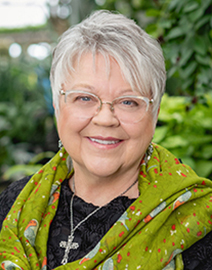
Faith
The symbology of the hydrangea can vary wildly between cultures, but the Christian symbolism of the white hydrangea is purity, grace and -- not surprisingly -- abundance

Realy
The Annabelle hydrangea in my front yard is a stunner! It has grown there for more than 30 years, and when it blooms its 8-inch wide puffs of white flowers, it stops traffic with its gorgeous display. There is a second stand of Annabelle in the backyard, equally impressive. It grows in a 20-foot long, brick-framed raised bed, between a cement path and stockade fence.
Its botanical name is "Hydrangea arborescens" but "Annabelle," as it's more commonly known, is a smooth or wild hydrangea. It's also sometimes endearingly called "sheep flower," because its floral display can look much like sheep on a hillside.
These deciduous shrubs grow about 3 to 5 feet tall and turn a lovely honey-gold in autumn. Their massive flower heads, with an incredibly long blooming period, can be left on the stalk for a striking winter display; they are especially lovely in the frost, when they look like sparkling lace.
The symbology of the hydrangea can vary wildly between cultures, but the Christian symbolism of the white hydrangea is purity, grace and -- not surprisingly -- abundance, because it is rich in both flowers and roots.
This shrub is a lovely addition to a shade garden, and in a prayer garden its visual characteristics offer many opportunities for spiritual reflection -- such as in how its roots persevere or how (no matter how limited the space) it will always push to go beyond where it is planted.
Annabelle hydrangeas spread slowly but persistently by a shallow root system that grows near the surface, incrementally expanding into the garden and utterly ignoring any means of confinement. The stand in my backyard regularly creeps between the brickwork and, if not attended to, will push apart the wall, blocking the path with new growth.
The shrub also helps us to see how dependent we are upon our Lord; Hydrangeas ("hydra," for water) easily wilt, but with a good soaking will quickly recover. We too can wilt with the demanding heat of our life as Christians, and we rely heavily on God's rain of mercy to refresh us, to keep us alive, vital and prospering. We are also renewed by holy water, reminding us of the cross and endurance.
Every year this hydrangea requires severe pruning to the ground, flowering even more gloriously on newly regenerated stems. Isn't that true for the times we too get severely pruned back? When the Lord wants us to grow vigorously in our journey with him, we are often first brought low.
A hydrangea's sturdy stems, grown strong with proper care, will manage to hold its massive flowers high throughout the most formidable of winters. How encouraging their form is when covered with snow, reminding us that we can stand fast, undaunted by the demands of buffeting storms and heavy burdens of our own personal winters.
Societally, many of us live and grow in restrictive environments, trying to push through walls -- some created by Our Lord to lend support, but others meant to hold us back. Once through, like the Annabelle in my backyard, we can end up unproductive, though, and on barren ground. We may even unintentionally block the progress of others with our uninhibited enthusiasm to "go beyond" the structures of the catechism or the church. The plant gives us so many lessons to ponder.
As Christians, we too can be as abundant as the Annabelle -- propagating the faith slowly and steadily, evangelizing where we are planted and reflecting our Lord's plan by being all we are meant to be. When we are fully ourselves and steadily growing in our faith, accepting the pruning so as to flourish more abundantly, others will stop and wonder at the glory of God revealed by our lives.
- Margaret Rose Realy is a Benedictine Oblate and the author of "A Garden Catechism: 100 Plants in Christian Tradition and How to Grow Them" (OSV, 2022).
Recent articles in the Faith & Family section
-
Scripture Reflection for May 19, 2024, Pentecost SundayJem Sullivan
-
Can I go to a Methodist church since there are no Catholic churches nearby?Jenna Marie Cooper
-
Ascended into heavenJaymie Stuart Wolfe
-
May is packed with joy, meaning and mystical wonderBishop Robert Reed
-
The Eucharistic PrayerFather Robert M. O’Grady


















